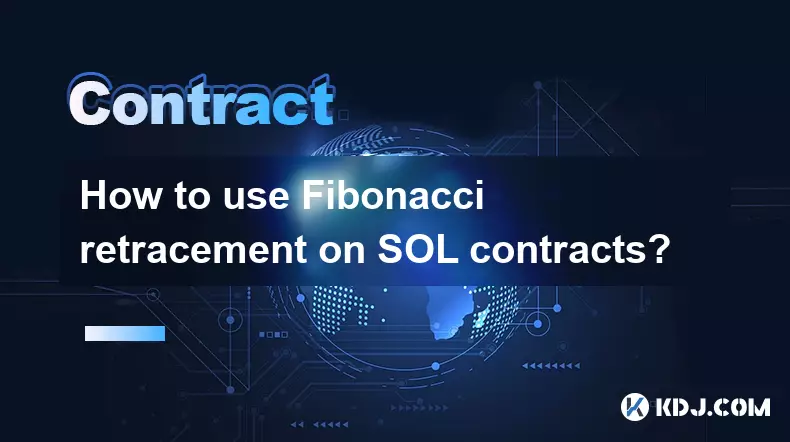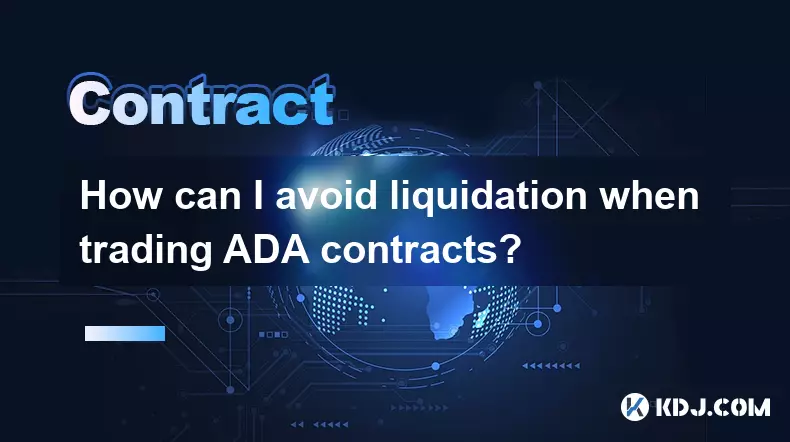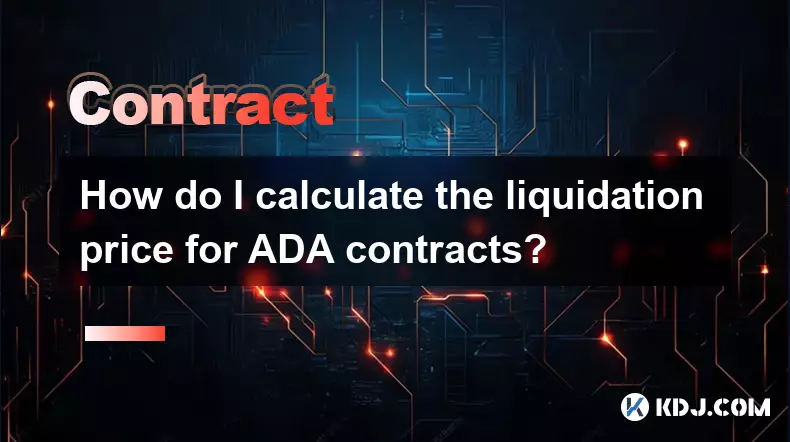-
 bitcoin
bitcoin $108842.957301 USD
-1.88% -
 ethereum
ethereum $3931.777121 USD
-1.66% -
 tether
tether $1.000186 USD
-0.03% -
 bnb
bnb $1153.250882 USD
-2.20% -
 xrp
xrp $2.367904 USD
-1.94% -
 solana
solana $186.182050 USD
-4.20% -
 usd-coin
usd-coin $0.999997 USD
0.00% -
 tron
tron $0.316949 USD
-1.00% -
 dogecoin
dogecoin $0.190780 USD
-3.12% -
 cardano
cardano $0.651324 USD
-2.67% -
 hyperliquid
hyperliquid $37.141055 USD
-0.85% -
 ethena-usde
ethena-usde $0.999224 USD
-0.09% -
 chainlink
chainlink $17.579031 USD
-2.47% -
 bitcoin-cash
bitcoin-cash $509.426284 USD
-2.79% -
 stellar
stellar $0.315298 USD
-2.93%
How to use Fibonacci retracement on SOL contracts?
Fibonacci retracement helps SOL traders identify key support/resistance levels at 38.2%, 50%, and 61.8% for strategic entries in uptrends or downtrends.
Oct 14, 2025 at 02:36 pm

Fibonacci Retracement Basics in SOL Trading
1. Fibonacci retracement is a technical analysis tool used to identify potential support and resistance levels based on price movements. In the context of Solana (SOL) futures or perpetual contracts, traders apply this method by selecting a significant price swing — from a clear low to a high in an uptrend, or high to low in a downtrend.
2. The key Fibonacci levels are 23.6%, 38.2%, 50%, 61.8%, and 78.6%. These percentages represent potential areas where price may retrace before continuing in the original direction. Although 50% is not a Fibonacci ratio, it is commonly included due to market psychology.
3. On trading platforms like Binance, Bybit, or OKX, users can access the Fibonacci retracement tool under the drawing tools section. After identifying a strong impulse move in SOL’s price, drag the tool from the swing low to swing high (in an uptrend) to generate the retracement levels.
4. Traders watch how price interacts with these levels. A bounce off 61.8% may indicate strong buyer interest, while a break below 78.6% could signal trend weakness. These levels become decision points for entering long or short positions on SOL contracts.
5. It’s essential to use volume and candlestick patterns alongside Fibonacci levels. For example, a bullish engulfing pattern forming at the 61.8% retracement increases the probability of a reversal, especially if accompanied by rising open interest in SOL futures.
Integrating Fibonacci with Momentum Indicators
1. To improve accuracy, combine Fibonacci retracement with momentum oscillators such as the Relative Strength Index (RSI) or MACD. When SOL price reaches the 61.8% level and RSI shows oversold conditions (below 30), it strengthens the case for a long entry on SOL/USD perpetuals.
2. Divergence between price and RSI at a Fibonacci level adds further confirmation. If SOL makes a lower low at the 78.6% retracement but RSI forms a higher low, it suggests weakening selling pressure and a possible upward reversal.
3. MACD histogram contraction near a key Fibonacci zone indicates deceleration in momentum. Traders may wait for the MACD line to cross above the signal line within the 38.2%-61.8% range before initiating a long position with leverage.
4. Timeframe alignment improves reliability. A 61.8% retracement on the 4-hour chart that coincides with a similar level on the daily chart increases confluence. This multi-timeframe approach is particularly effective when trading high-leverage SOL contracts.
5. Using Fibonacci with volume profile helps distinguish between genuine reactions and false breaks. A retracement that finds support on high-volume nodes within the 50%-61.8% zone often leads to stronger follow-through moves.
Practical Strategies for SOL Contract Entries
1. One common strategy involves placing limit orders at Fibonacci levels after a sharp rally or drop. For instance, if SOL rises from $90 to $120 rapidly, traders might place buy-limit orders at $108 (61.8% retracement) anticipating a continuation upward.
2. Stop-loss placement is critical. For long entries at the 61.8% level, setting stops just below the 78.6% mark protects against deeper corrections. Conversely, short setups at resistance levels should have stops above the recent swing high.
3. Scaling into positions increases risk efficiency. A trader might deploy 50% of capital at 61.8%, add another 30% at 78.6% if reached, and reserve 20% for breakout confirmation above the prior high.
4. Fibonacci extensions (127.2%, 161.8%) are useful for setting profit targets on leveraged trades. After a pullback ends at 61.8%, projecting gains using extension levels provides objective take-profit zones.
5. News and macro events can invalidate Fibonacci setups. Major protocol upgrades or exchange listings may cause SOL to bypass expected retracement zones. Monitoring the crypto calendar ensures technical strategies aren’t blindsided by external catalysts.
Frequently Asked Questions
What timeframes work best for Fibonacci retracement on SOL?The 1-hour, 4-hour, and daily charts offer reliable swings for applying Fibonacci. Shorter timeframes like 5-minute are noisy and prone to whipsaws, making them less ideal for contract trading.
Can Fibonacci be used during sideways SOL markets?It is less effective in ranging conditions. Without a clear impulse move, anchoring the tool becomes arbitrary. Wait for breakout confirmation before redrawing levels in consolidation phases.
How do funding rates affect Fibonacci-based entries?High positive funding rates during a long setup at 61.8% suggest crowded longs, increasing the risk of a squeeze. Contrarian signals emerge when price holds despite expensive funding, indicating strong underlying demand.
Should I adjust Fibonacci levels for volatility spikes?Yes. During periods of extreme volatility, such as post-FOMC announcements, wider spreads and slippage require wider stop buffers. Consider combining with ATR (Average True Range) to adapt position sizing and stop distances.
Disclaimer:info@kdj.com
The information provided is not trading advice. kdj.com does not assume any responsibility for any investments made based on the information provided in this article. Cryptocurrencies are highly volatile and it is highly recommended that you invest with caution after thorough research!
If you believe that the content used on this website infringes your copyright, please contact us immediately (info@kdj.com) and we will delete it promptly.
- Navigating Crypto Chaos: Is Bitcoin, Ethereum, or Solana a Safe Haven?
- 2025-10-18 02:25:13
- OpenSea's Multi-Chain Evolution: From NFTs to Crypto Aggregator
- 2025-10-18 02:25:13
- SEA Token, OpenSea, and Trading Volume: What's the Deal?
- 2025-10-18 02:26:10
- From US Mint to Silicon Valley: Steve Jobs, Cray-1, and American Innovation
- 2025-10-18 02:26:10
- Crypto, Gaming, and Future Trends: Leveling Up the Digital World
- 2025-10-18 02:26:10
- Metis, Ju.com, and Listings: What's the Buzz?
- 2025-10-18 02:30:16
Related knowledge

How can I avoid liquidation when trading ADA contracts?
Oct 18,2025 at 01:37am
Understanding Liquidation in ADA Futures Trading1. Liquidation occurs when a trader’s margin balance falls below the maintenance threshold required to...

How do I calculate the liquidation price for ADA contracts?
Oct 18,2025 at 01:18am
Understanding Liquidation Price in ADA Futures Contracts1. The liquidation price in ADA futures trading refers to the market price at which a leverage...

How can I practice trading SOL contracts with a demo account?
Oct 18,2025 at 02:18am
Accessing a Demo Platform for SOL Trading1. Identify cryptocurrency exchanges or trading platforms that offer futures or perpetual contracts on Solana...

What are the most common mistakes beginners make with Bitcoin contracts?
Oct 17,2025 at 11:36pm
Overleveraging Without Risk Assessment1. New traders often commit a large portion of their capital to Bitcoin futures or perpetual contracts without u...

How to calculate the ROI for Ethereum contracts?
Oct 09,2025 at 04:36pm
Understanding Ethereum Contract ROI Basics1. Return on Investment (ROI) for Ethereum contracts begins with tracking the initial capital deployed into ...

How to find arbitrage opportunities between different Bitcoin contracts?
Oct 14,2025 at 11:18pm
Finding Arbitrage Opportunities in Bitcoin Futures Markets1. Monitor price discrepancies across exchanges offering Bitcoin futures contracts. Differen...

How can I avoid liquidation when trading ADA contracts?
Oct 18,2025 at 01:37am
Understanding Liquidation in ADA Futures Trading1. Liquidation occurs when a trader’s margin balance falls below the maintenance threshold required to...

How do I calculate the liquidation price for ADA contracts?
Oct 18,2025 at 01:18am
Understanding Liquidation Price in ADA Futures Contracts1. The liquidation price in ADA futures trading refers to the market price at which a leverage...

How can I practice trading SOL contracts with a demo account?
Oct 18,2025 at 02:18am
Accessing a Demo Platform for SOL Trading1. Identify cryptocurrency exchanges or trading platforms that offer futures or perpetual contracts on Solana...

What are the most common mistakes beginners make with Bitcoin contracts?
Oct 17,2025 at 11:36pm
Overleveraging Without Risk Assessment1. New traders often commit a large portion of their capital to Bitcoin futures or perpetual contracts without u...

How to calculate the ROI for Ethereum contracts?
Oct 09,2025 at 04:36pm
Understanding Ethereum Contract ROI Basics1. Return on Investment (ROI) for Ethereum contracts begins with tracking the initial capital deployed into ...

How to find arbitrage opportunities between different Bitcoin contracts?
Oct 14,2025 at 11:18pm
Finding Arbitrage Opportunities in Bitcoin Futures Markets1. Monitor price discrepancies across exchanges offering Bitcoin futures contracts. Differen...
See all articles










































































